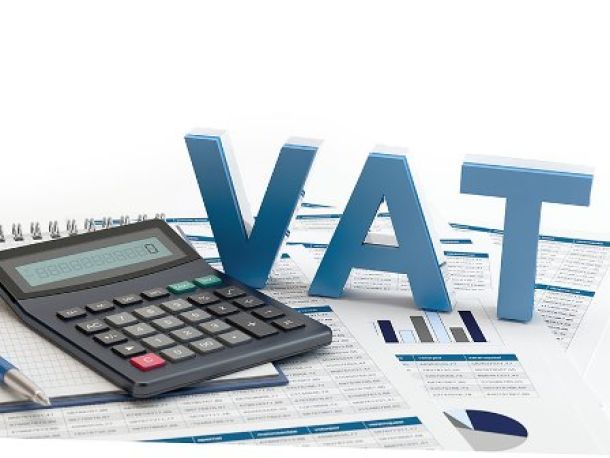SA economy weighs on food retailers
Food retailers come under pressure as the domestic economy falters. When the domestic economy sneezes, consumers are likely to catch a cold.
And no doubt the cold has already set in with sustained rising costs and higher interest rates helping to drive consumer confidence to a 14-year low.
As a result even the food retailers, usually the most defensive of stocks, are feeling the pinch, if recent company earnings are anything to go by.
The common theme with food retailers is that the domestic economy continues to put the brakes on earnings. You don’t have to look far for pressure points: economic growth expected to be than 2% in 2015, en masse mining job cuts and a lack of job creation.
Shoprite
The latest counter to feel the brunt of this is retail bellwether Shoprite which reported first-quarter earnings that were below expectations.
Shoprite’s turnover increased by 6.7% and SA stores grew sales by 4.9% during the period under review. The grocer put the slow growth on fewer store openings.
“The difficult trading environment impacted them as well. Consumers are increasingly having less to spend and people have been aware of this, but we are now really starting to see the strain of consumers,” says Daniel Isaacs an equity analyst with 36One Asset Management. The consensus among most market watchers was that Shoprite’s turnover would surpass 10%. On a like-for-like basis, it means that Shoprite did not see any organic growth.
For the year ended June 2015, Shoprite reported an 11.2% growth in turnover to R113.7 billion and recorded trading profit of R6.3 billion with trading margin of 5.57%.
It is forging ahead with store rollouts beyond its current 1 104, as it looks to grow its footprint in SA, Madagascar, the Democratic Republic of the Congo and Uganda.
Sasfin Securities analyst Alec Abraham says although there might be a focus on store roll outs, there seems to be a cannibalisation of sales with existing stores competing with each other. “As long as we don’t see decent economic growth you will see many casualties. There is a high dependence on new stores openings,” says Abraham.
Pick n Pay
Pick n Pay is making inroads on its more than three-year-long turnaround strategy to return to its once dominant status. The retailer reported turnover growth of 8.5% to R34.9 billion for the six months to August 30, while trading profit was R461.6 million, with its trading profit margin inching up to 1.3%.
As part of its long-term recovery, Pick n Pay shut underperforming stores in a bid to curb spiralling costs, improved its supply chain, rolled out aggressive promotional activity for competitive pricing and refurbished existing stores. “It seems like Pick n Pay is starting to take back some market share as its turnaround is starting to bear fruit,” says Isaacs.
While there are views swirling that Pick n Pay’s turnaround efforts might have taken Shoprite’s market share, Abraham doubts that this is the case. “Shoprite will still wipe the floor with Pick n Pay in lower income areas. Pick n Pay is poorly represented in the lower income areas,” he says.
Woolworths
This is a counter that seems resilient through economic pressures, as its upper-end market focus is paying off. Group sales increased by 54.9% to R62 billion, largely as a result of the takeover of Australian retailer David Jones. Woolworths’ food business saw sales grow by 13.5% while gross profit margin increased by 0.4% to 25.7%.
Says Isaacs: “Woolworths share price also doesn’t look cheap, but there were transaction costs relating to the David Jones acquisition in previous numbers which won’t be repeated.”
All these retailers are trading off at a more than 20x PE; Shoprite (20), Pick n Pay (33) and Woolworths (33), which makes them more expensive than apparel retailers. But the reality, Abraham says SA’s market is becoming a less of a growth market. “Competition in the market is getting higher,” he says.
Spar will report its earnings next month.
SA economy weighs on food retailers
Despite high valuation multiples recorded.
Ray Mahlaka | 21 October 2015 00:15
And no doubt the cold has already set in with sustained rising costs and higher interest rates helping to drive consumer confidence to a 14-year low.
As a result even the food retailers, usually the most defensive of stocks, are feeling the pinch, if recent company earnings are anything to go by.
The common theme with food retailers is that the domestic economy continues to put the brakes on earnings. You don’t have to look far for pressure points: economic growth expected to be than 2% in 2015, en masse mining job cuts and a lack of job creation.
Shoprite
The latest counter to feel the brunt of this is retail bellwether Shoprite which reported first-quarter earnings that were below expectations.
Shoprite’s turnover increased by 6.7% and SA stores grew sales by 4.9% during the period under review. The grocer put the slow growth on fewer store openings.
“The difficult trading environment impacted them as well. Consumers are increasingly having less to spend and people have been aware of this, but we are now really starting to see the strain of consumers,” says Daniel Isaacs an equity analyst with 36One Asset Management. The consensus among most market watchers was that Shoprite’s turnover would surpass 10%. On a like-for-like basis, it means that Shoprite did not see any organic growth.
For the year ended June 2015, Shoprite reported an 11.2% growth in turnover to R113.7 billion and recorded trading profit of R6.3 billion with trading margin of 5.57%.
It is forging ahead with store rollouts beyond its current 1 104, as it looks to grow its footprint in SA, Madagascar, the Democratic Republic of the Congo and Uganda.
Sasfin Securities analyst Alec Abraham says although there might be a focus on store roll outs, there seems to be a cannibalisation of sales with existing stores competing with each other. “As long as we don’t see decent economic growth you will see many casualties. There is a high dependence on new stores openings,” says Abraham.
Pick n Pay
Pick n Pay is making inroads on its more than three-year-long turnaround strategy to return to its once dominant status. The retailer reported turnover growth of 8.5% to R34.9 billion for the six months to August 30, while trading profit was R461.6 million, with its trading profit margin inching up to 1.3%.
As part of its long-term recovery, Pick n Pay shut underperforming stores in a bid to curb spiralling costs, improved its supply chain, rolled out aggressive promotional activity for competitive pricing and refurbished existing stores. “It seems like Pick n Pay is starting to take back some market share as its turnaround is starting to bear fruit,” says Isaacs.
While there are views swirling that Pick n Pay’s turnaround efforts might have taken Shoprite’s market share, Abraham doubts that this is the case. “Shoprite will still wipe the floor with Pick n Pay in lower income areas. Pick n Pay is poorly represented in the lower income areas,” he says.
Woolworths
This is a counter that seems resilient through economic pressures, as its upper-end market focus is paying off. Group sales increased by 54.9% to R62 billion, largely as a result of the takeover of Australian retailer David Jones. Woolworths’ food business saw sales grow by 13.5% while gross profit margin increased by 0.4% to 25.7%.
Says Isaacs: “Woolworths share price also doesn’t look cheap, but there were transaction costs relating to the David Jones acquisition in previous numbers which won’t be repeated.”
All these retailers are trading off at a more than 20x PE; Shoprite (20), Pick n Pay (33) and Woolworths (33), which makes them more expensive than apparel retailers. But the reality, Abraham says SA’s market is becoming a less of a growth market. “Competition in the market is getting higher,” he says.
Spar will report its earnings next month.
News Category
- International retailers
- On the move
- Awards and achievements
- Legislation
- Wine and liquor
- Africa
- Going green
- Supplier news
- Research tools
- Retailer trading results
- Supply chain
- Innovation and technology
- Economic factors
- Crime and security
- Store Openings
- Marketing and Promotions
- Social Responsibility
- Brand Press Office
Related Articles

Empowering South African households through gro...

SPAR shares practical tips to beat food inflation

South African motorists could be paying up to R...

Big VAT changes on the cards


